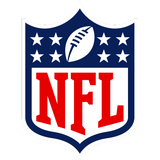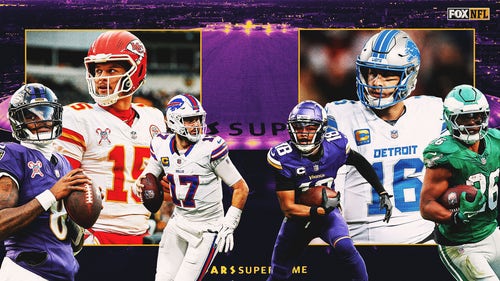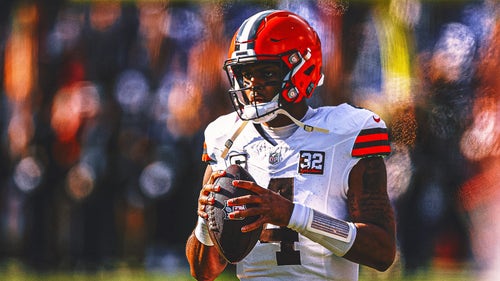
Green Bay Packers QBs Lynn Dickey and Aaron Rodgers best at #12

With 12 days left until the start of the Green Bay Packers‘ NFL season, our countdown to the big day continues.
Sunday, Sept. 11, is the day when the Packers travel to Jacksonville to take on the upstart Jaguars.
Today we move on to number12 … a number worn by two quarterbacks – Lynn Dickey and Aaron Rodgers.
 Read those names again – Dickey and Rodgers – one of them is in the Packers Hall of Fame and the other, Rodgers, is bound to be inducted at some point in the future … we hope well into the future.
Read those names again – Dickey and Rodgers – one of them is in the Packers Hall of Fame and the other, Rodgers, is bound to be inducted at some point in the future … we hope well into the future.
Yes, the arguments about the best player to have played for the Packers should include the names of Ray Nitschke, Bart Starr, Brett Favre and Reggie White, but it was Dickey, and now Rodgers who help set the standard for the modern game with their abilities and their actions that helped Packers teams through the years.
We’ll start with Dickey today and continue on with Rodgers, with contributions once again from John Maxymuk, the author of “Packers by the Numbers: Jersey Numbers and the Players Who Wore them.”
His words will provide insight and background on Dickey, while I’ll provide the narrative for Jacke and Rodgers.
Turn the pages and enjoy …
Lynn Dickey
Had Lynn Dickey remained healthy, he may have been one of the best to play the game for the Packers.
Injuries slowed him later on in his career, but his canon for an arm allowed him and the Packers to have success even when the team around him just wasn’t very good.
Here’s how Maxymuk describes his career …
Periodically a glut of highly-rated college quarterbacks com out of college and create a “Year of the Quarterback” draft. The most famous instance was in 1983 when John Elway, Dan Marino, Jim Kelly, Ken O’Brien, Tony Eason and Todd Blackledge all were selected in the first round.
The first big quarterback draft, though, was in 1971 when Jim Plunkett, Archie Manning, and Dan Pastorini were picks in the first round, Ken Anderson and Lynn Dickey were picked in the third round, and Joe Theismann went in round four.
Dickey, as his luck would dictate, was draftd by the Oilers, who had also picked Pastorini.
Pastorini won the starting job as a rookie, but was being challenged in the preseason of his sophomore year by Dickey when Lynn was driven awkwardly into the artificial turf in an exhibition game and both dislocated and broke his left hip.
After a year of rehab, he would challenge Pastorini again in 1973 and 1974, but never quite could beat him out. By 1976, Dickey was rusting on the bench when Packers coach Bart Starr obtained him in a trade. He was given the starting job, but it was a mixed blessing. The Packers offense was awful, with few scoring weapons available.

Bart Starr had a pretty good team in 1982, including another of the greatest Packers quarterbacks, Lynn Dickey, pictured here to the right of Starr.
Raymond T. Rivard photographIn 1976, with sixth year rookie starter Dickey at the helm, the team averaged only 15.5 points per game and Lynn went down with a shoulder separation in the tenth game. The next year was even worse on both the offensive and injury fronts. The Packers averaged only 9.5 points per game and Lynn had his leg badly broken on the last play of the ninth game of the year. He would not return until late in the 1979 season, missing all of 1978.
By the start of the 1980 season, Dickey had missed 30 of 60 games due to injury in his four years in Green Bay and 53 games altogether in his nine-year career. In that span, he had thrown 25 touchdowns and 60 interceptions. Although the injuries and pain would continue, his career would take off in the new decade.
He had weapons at last: James Lofton as a deep threat, Paul Coffman at tight end, and Eddie Lee Ivery and Gerry Ellis as runners and receivers out of the backfield.
John Jefferson would arrive the next year. In the remaining six years of his career, Lynn would throw for 116 touchdowns and 119 interceptions. He would throw for more than 3,000 yards in three seasons, setting a team record of 4,458 passing yards in 1983 when he also led the league with 32 touchdown pass and an average of 9.21 yards per-reception.
The most emblematic game of Lynn’s years in Green Bay was on Monday night, Oct. 17, 1983, against the champion Washington Redskins. Green Bay would jump on top early when linebacker Mike Douglass recovered Joe Washington‘s fumble and returned it 22 yards for a touchdown.
It was the only big play either defense would make all night. The two teams ran up 1,025 yards of offense, 552 for Washington who had the ball for 39 minutes and 473 for Green Bay who held the ball for only 21 minutes.
The teams scored 95 points. Redskins quarterback Joe Theismann threw for 398 yards and two scores, while Dickey completed 22-of-30 for 387 yards and three touchdowns. It was a see-saw battle from the start, and the lead change hands five times in the last quarter.
Green Bay scored on seven of 10 possessions, and Washington scored on nine of 12.
Announcer Don Meredith kept saying that the first team to 50 wins, and when reliable Mark Mosely lined up for a 39-yard field goal on the last play of the game with the Skins trailing 48-47, Don’s prediction seemed inevitable.
Dickey said to his kicker, Jan Stenerud, “Can you believe we’re going to lose this game?”
And then Mosely missed. With a defense that weak, however, endings were often not so happy during Dickey’s time.
Dickey’s last game was the Snow Bowl against Tampa Bay on Dec. 1, 1985, at Lambeau, before only 19,000 fans. Playing in a blizzard that dumped more than a foot of snow in Green Bay that day, Dickey completed 22-of-36 passes for 299 yards in a 21-0 win over the Bucs. Lofton caught six for 106 yards and both running bucks, Ellis and Ivery, rushed for over 100 as well.
In the following week, Lynn hurt himself on a weight training machine and he would not play again. He never saw eye-to-eye with Forrest Gregg and thus claimed to be relieved when Forrest released him in 1986, ending Dickey’s NFL career.
He was known as being perhaps the best pure passer in team history and threw the bomb accurately.
Lynn Dickey was the epitome of toughness, came back time after time from serious injury and played through chronic pain. He was a notable figure in the team’s long tradition of emphasizing the passing game and was inducted into the Packers Hall of Fame in 1992.
All Packers players to have worn number 12 over the past 50 years:
| From | To | AV | |
|---|---|---|---|
| Zeke Bratkowski | 1963 | 1971 | 11 |
| Jim Del Gaizo | 1973 | 1973 | 1 |
| Lynn Dickey | 1980 | 1985 | 54 |
| Brian Dowling | 1977 | 1977 | 0 |
| John Hadl | 1974 | 1974 | 4 |
| Don Milan | 1975 | 1975 | 1 |
| Aaron Rodgers | 2005 | 2013 | 88 |
| T.J. Rubley | 1995 | 1995 | 0 |
Aaron Rodgers
If there’s one thing you can say about Aaron Rodgers, it’s that he’s always been patient.
He’s been known for his proverbial chip on the shoulder, but his accomplishments of Super Bowl champion and Super Bowl MVP, NFL MVP and being one of the most handsomely paid quarterbacks in the league have come through his patience.
Drafted by the Green Bay Packers in 1995, we all know about his green room nightmare where he waited and waited until the Packers finally selected him with the 24th pick.
Then he went to Green Bay where the Packers already had a pretty good quarterback. He sat and he learned. Patiently awaiting his turn to prove that he had the skills to be one of the best quarterbacks in franchise history, he finally got his shot when Brett Favre retired, unretired, and then was traded to the New York Jets.
But his success didn’t come right away. In his first season as the starter, the Packers finished with a 6-10 record. But he continued to show his patience.
And that’s when things started to turn for him and the Packers.
Finally in 2010, his career took a turn that skyrocketed as that season progressed. He peaked at the right time, leading the Packers through the playoffs – winning three straight road games – and then to the Super Bowl where the Packers defeated the Pittsburgh Steelers and Rodgers was the star.
However, it was in 2011 when he had his best statistical season with Green Bay, leading the Packers to a 14-1 season. It was also one of his most frustrating seasons because it was the year when the upstart New York Giants came to Lambeau Field to beat the Packers in the second round of the Playoffs.
Aaron Rodgers
Raymond T. Rivard photograph
But with Rodgers under center, the Packers have continuously been successful and have been Super Bowl contenders.
Two seasons ago, Rodgers was injured and it became evident with his loss to the team just how valuable a player he is. He demonstrated that when he came back for the final game of the season against the the Chicago Bears. Playing for the division title and a playoff spot, Rodgers and Randall Cobb, who was also back from a near-season-long injury, connected on a 4th and 10 play for a touchdown and the win.
Rodgers’ value to the Packers was rewarded last year when he was signed to a five-year, $110 million contract that will keep him in Green Bay until 2020. He continues to award the franchise with his incredible play and though he wasn’t as effective in 2015, Rodgers’ value continues to be as high as any player in the league.
Rodgers has had a completion percentage clip of right around 65 percent. Even more impressive has been Rodgers’ low percent interception rate, a statistic that is the complete opposite of his predecessor. In addition, his career quarterback rating of right around 100 continues to be one if the best in all the league.
What most people like about Rodgers is his personality, especially his penchant or his now-famous photo bombing. Each week when the Packers’ captains are photographed, Rodgers can always be found in the background, sometimes with unusual props that only enhance the photo.
His down-to-earth attitude and humility make him very difficult not to like. Even Bears fans have told me they admire him as a person, though they aren’t too pleased with what he has done to their team.
No doubt, if Aaron Rodgers continues to play the game like he has over the past 10 seasons, he will be in for even more success over the course of his contract and most likely headed to many honors in retirement.
We all will stay tuned to the next few years and hope for the best.
All Packers players to have worn number 12 over the past 50 years:
| From | To | AV | |
|---|---|---|---|
| Zeke Bratkowski | 1963 | 1971 | 11 |
| Jim Del Gaizo | 1973 | 1973 | 1 |
| Lynn Dickey | 1980 | 1985 | 54 |
| Brian Dowling | 1977 | 1977 | 0 |
| John Hadl | 1974 | 1974 | 4 |
| Don Milan | 1975 | 1975 | 1 |
| Aaron Rodgers | 2005 | 2013 | 88 |
| T.J. Rubley | 1995 | 1995 | 0 |
More from Lombardi Ave
This article originally appeared on












